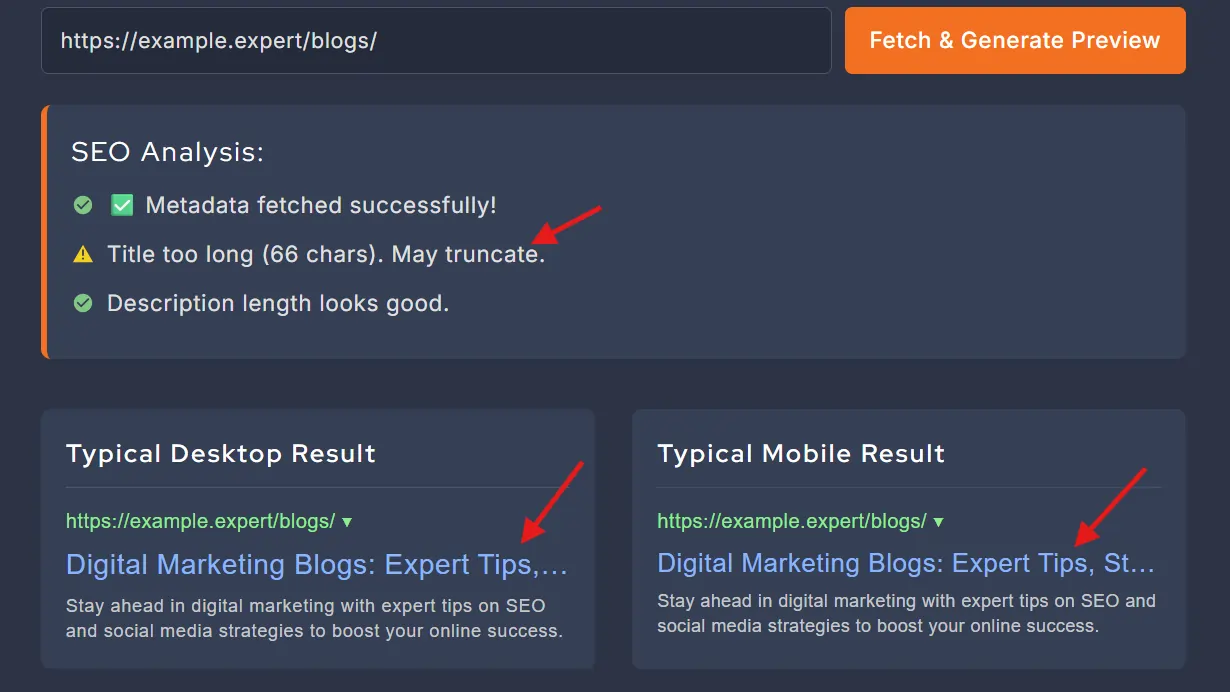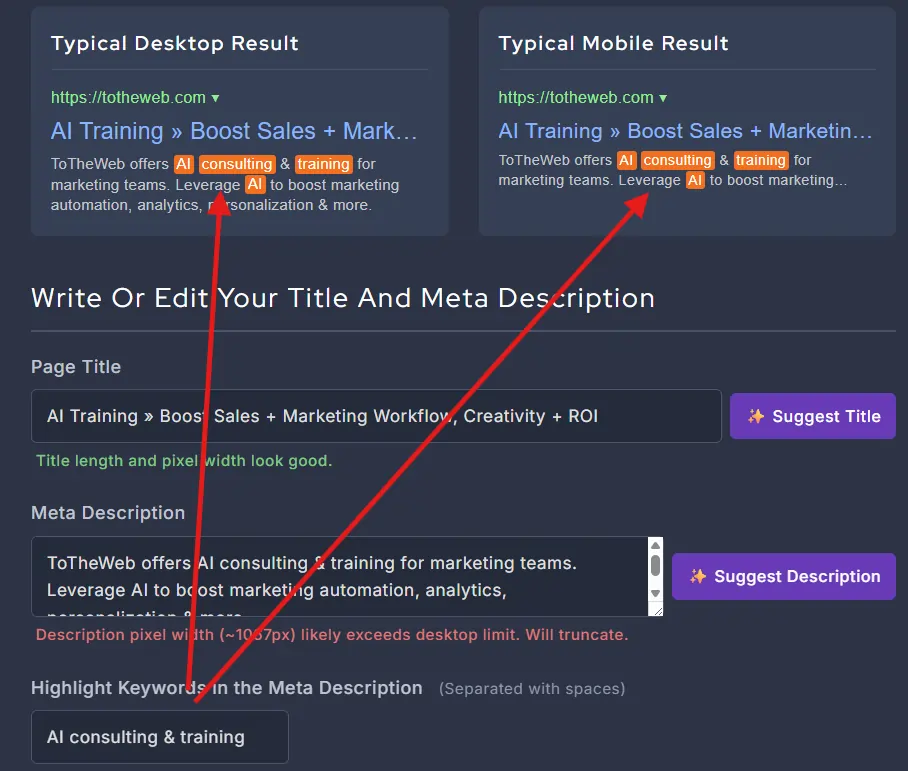How to Write Effective SEO Title Tags (That Get Clicks)
Your page's title tag (or `title` element) is arguably one of the **most crucial on-page SEO factors**. It's the primary piece of text that appears as the clickable headline in Google's search results and often shows up in browser tabs and social media shares. Getting it right can significantly impact your rankings and, more importantly, your Click-Through Rate (CTR).
Why Are Title Tags So Important?
- First Impressions: It's often the first thing a user sees related to your site in the SERPs. It needs to grab attention and accurately represent your page's content.
- Search Engine Understanding: Search engines like Google use the title tag to understand the main topic of your page. Including relevant keywords helps them rank your page correctly.
- CTR Driver: A compelling title encourages users to click *your* result over competitors, even if you rank slightly lower.
- Social & Browser Visibility: It provides context when shared on social platforms or when users have multiple browser tabs open.
Key Principles for Writing Great Title Tags:
- Mind the Length (Pixel Width): Google doesn't have a strict *character* limit; it has a *pixel width* limit (around 600px). This generally translates to **55-65 characters**. Our SERP Preview Tool helps you visualize this. Titles longer than the limit will be truncated (usually with "..."), potentially cutting off important information.

- Lead with Your Primary Keyword: Place your most important target keyword(s) as close to the beginning of the title as possible. Users scan from left to right, and search engines often give more weight to words at the start.
- Make it Compelling & Click-Worthy: It's not just for bots; it's for humans! Use action words, numbers, questions, or unique value propositions (UVPs) to entice clicks. Think of it as ad copy.
- Be Accurate & Descriptive: Ensure the title accurately reflects the content a user will find on the page. Misleading titles lead to high bounce rates, which can hurt your rankings.
- Include Your Brand (Usually at the End): For brand recognition, it's often good practice to add your brand name at the end, separated by a pipe (|) or a hyphen (-), especially for homepages or key landing pages. If length is an issue, prioritize keywords and compelling copy.
- Ensure Uniqueness: Every page on your site should have a unique title tag. Duplicate titles can confuse search engines and dilute your ranking potential.
Good vs. Bad Examples:
Let's say you have a page about "Dark Theme Website Design".
Home - Speed.cy Bad:
Design, Web Design, Dark Mode, Themes, Website Design, How To Design - Speed.cy Marketing Website Design Services Bad:
Click Here for Amazing Design! Dark Theme Web Design: Tips & Examples (2025) | Speed.cy Good:
10 Stunning Dark Theme Website Examples for Inspiration | Speed.cy Good:
How to Design Effective Dark Mode Websites | Speed.cy Final Thoughts on Titles:
Don't just set it and forget it. Monitor your CTR in Google Search Console. If a page ranks well but gets few clicks, experiment with different title tags (using a tool like ours to check them first!) to see if you can improve performance.

